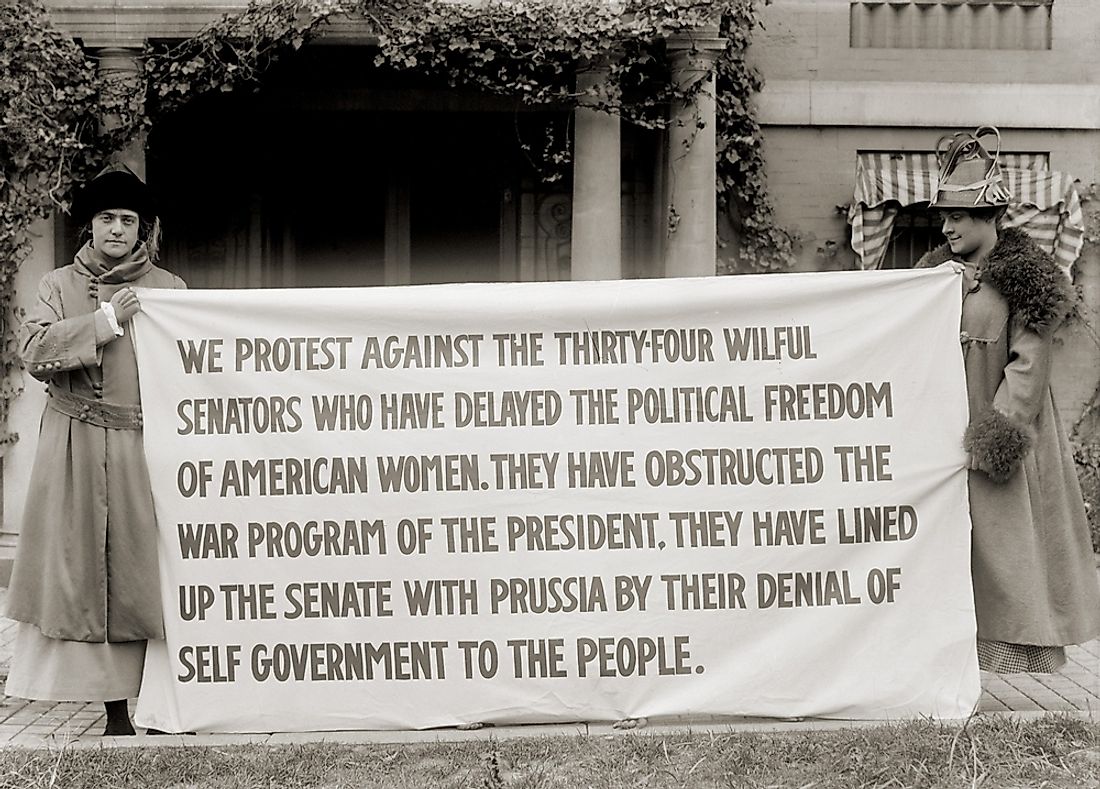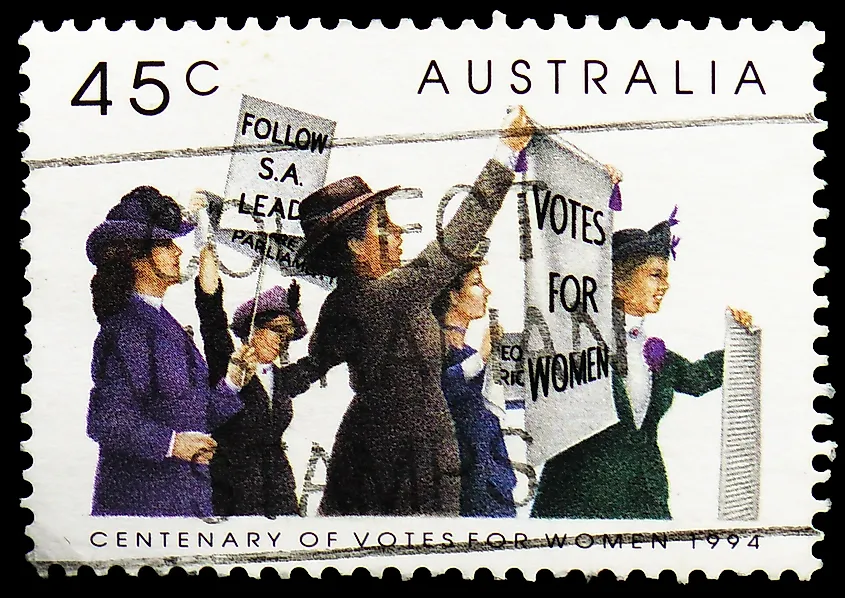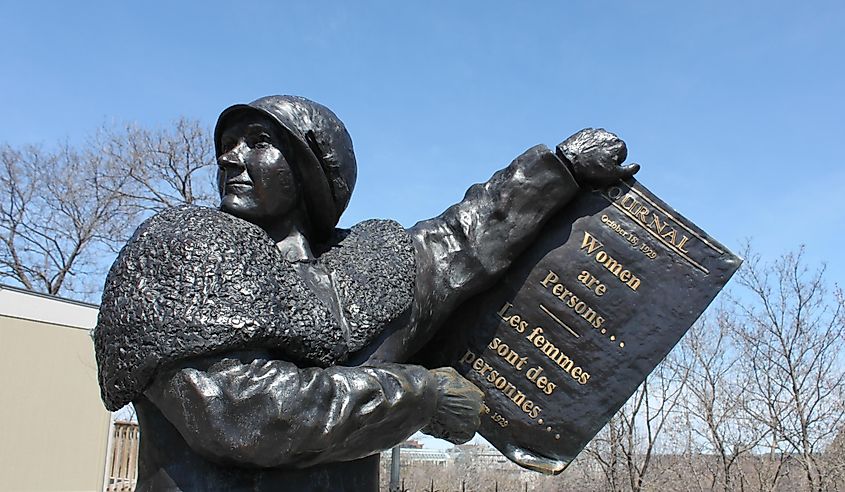Which Country First Gave Women The Right To Vote?

Surprisingly, women have not always had the right to vote and hold public office. Denial of these rights is rooted in Athenian democracy in which only men could vote. Although involving women in the electoral process was not a common practice throughout the Western World, many Indigenous tribes had key positions for women in governing bodies. Suffrage efforts were long and difficult; countries granted voting equality over many years, some long before others. Each place has its story, and some are quite surprising. This list will take a look at the first countries to grant women suffrage as well as a brief history of the movement.
The First Countries to Grant Women's Suffrage
New Zealand
In 1893, New Zealand became the first permanent and independent country to pass suffrage laws. Although the Corsican Republic, Pitcairn Island, Isle of Man and the Cook Islands all granted women the right to vote before this year, these acts were temporary as these countries were colonized and lost the right to vote. In New Zealand, the landmark act did not grant women the right to hold office in Parliament.
Australia
Nine years later, Australia followed suit and also passed a suffrage act for women, after independence from Great Britain. This act took effect in 1902, and though it did apply to all women in the new country, Aboriginal women were left out.

Finland
Finland was the first European country to join the ranks of other, more progressive nations in 1906. At that time, the country was called the Grand Duchy of Finland. Women had enjoyed voting rights before this, however, under both Swedish and Russian rule. What was unique about the 1906 ruling is that it also granted women the right to stand for parliament, the first country in the world to do so.
Norway
Norway granted suffrage in 1913 to women, though men in the nation had been voting since 1898. The suffrage movement here was led by Gina Krog, and she helped pioneer a law in 1901 that would allow some women to vote. These women must have paid a certain amount of taxes or be married to a man who paid that same amount. Not satisfied, Gina Krog and other women continued fighting for the next 12 years.
Denmark
Parliament in Denmark began discussing women’s suffrage in 1886 though the right was limited to tax-paying women living in Copenhagen. Women here got organized and formed the Women’s Suffrage Association, which held public meetings to discuss women’s rights and questioned parliamentary candidates about their views on the matter. Denmark finally granted women suffrage in 1915.
Armenia
The year 1917 saw sweeping legalization movements in favor of women voting. Armenia was granted women’s suffrage by the ruling Russian government and later passed its own law in 1919. The final Armenian law allowed for voting and holding public office.
Estonia
Estonia gained independence in 1918 but had already practiced equal voting rights since 1917. The first parliamentary elections were held in 1920, and two women were elected to serve. This year is the same year that Latvia granted women the right to vote.
Russia
Women had a difficult time obtaining the right to vote in Russia. Suffragists organized and rallied throughout the year 1917, even holding a march of over 40,000 attendees. The government finally relinquished and gave women the same voting rights as men on June 20, 1917.

Canada
The final country on the list is Canada. It joins several other countries in having granted women the right to vote in 1917. Only women who were war widows or had husbands or sons at war were able to vote. Considerations for extending this right were linked to the desire of the nation to remain a “White Settler” land. The government believed that by extending political rights to white women, the country would be further protected from racial degeneration. In May 1918, women citizens (this did not include Indigenous women) were given the right to vote.
The Importance of Women's Suffrage
Securing the right to vote was the first step toward equality for women. The most fundamental of Democratic rights, voting, gives a voice to individuals and allows them to participate in the actions of their government. The Suffrage Movement was more than this; women used this as a platform for continuing civic action and have since contributed to lasting change in their communities.
First 15 Countries To Grant Women's Suffrage
| Rank | Country | Year Women Were First Granted Voting Rights |
|---|---|---|
| 1 | Corsican Republic (now part of France) | 1755 |
| 2 | Pitcairn Island | 1838 |
| 3 | Isle of Man | 1881 |
| 4 | Cook Islands | 1893 |
| 5 | New Zealand | 1893 |
| 6 | Australia | 1902 |
| 7 | Finland | 1906 |
| 8 | Norway | 1913 |
| 9 | Denmark | 1915 |
| 10 | Armenia | 1917 |
| 11 | Estonia | 1917 |
| 12 | Latvia | 1917 |
| 13 | Netherlands | 1917 |
| 14 | Russia | 1917 |
| 15 | Canada | 1917 |











